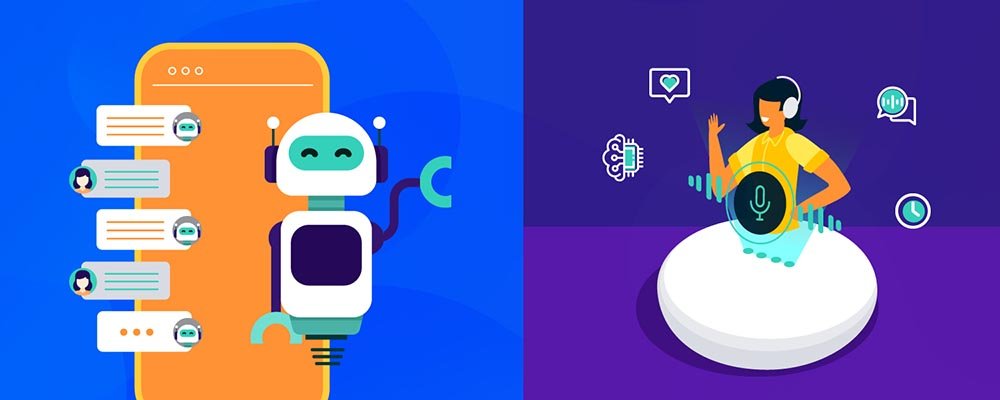Have you ever communicated with a virtual assistant or chatbot? You could have spoken to a customer support bot to settle a problem with an online purchase or asked Siri to play your favorite music. Virtual assistants are increasing and fundamentally altering how customers connect with companies. But what are virtual agents precisely, and how do they operate? This article will explore this technology’s intriguing realm and how it may help your company.
Table of Contents
What is a Virtual Agent?
A virtual agent is a piece of AI-enhanced software that can communicate with consumers automatically and without the aid of a person. Although it may take many forms, chatbots and voice-activated assistants like Alexa and Siri are the most common.
They are accommodating for customer support personnel because these clever programs employ artificial intelligence (AI) to interact across various channels, such as chat applications, websites, or mobile apps. Virtual agents are beneficial for managing recurrent client encounters while maintaining a human-like level of dialogue since they can comprehend everyday language, interpret user requests, and offer appropriate solutions.
Virtual agents may multitask between live chat support, sales help, and personal instruction. Responding to many client inquiries and requests at any hour of the day may help businesses save time and money. For this reason, so many companies now deploy chatbots on their websites and mobile applications. Virtual agents are getting smarter as AI technology develops, making them crucial to contemporary customer care and support. However, the meanings of “virtual agent” and other terms with similar meanings are not the same and are frequently used interchangeably. Let’s look at them now.
AI Virtual Agent vs. AI Virtual Assistant

Think of an AI-powered virtual Agents for Tech Support as more of a personal assistant in your pocket than a virtual agent, who is more of a specialized tool. A virtual assistant is a technology that assists with personal duties like making grocery lists, scheduling events, or doing online searches. Instead of companies, these assistants are engaged by people who need extra help with company operations.
Virtual agents, on the other hand, are technologies that facilitate user interaction with a brand and its offering of services. In other words, brands use these tools to assist customers. Because of this, customer service is where AI virtual agents are most frequently utilized, though there are many other applications for them as well. For instance, businesses may use virtual agents to assist clients with the loan application or insurance claim process.
Chatbots And Virtual Agents

When considering the contrasts between these two terminologies, it is essential to comprehend their historical development. Chatbots are only an interface, yet they remain crucial to communication between virtual agents and clients. Over time, chatbot technology has made significant strides, giving virtual assistants more flexibility.
Before conversational AI, chatbots had pre-programmed restrictions that limited their ability to reply to certain words or phrases. If the inputs weren’t formatted clearly and specifically, the chatbot’s replies would be challenging to understand. These rule-based models were, therefore, best suited for already-known activities.
Modern advances in conversational AI and natural language processing (NLP) have given chatbots and virtual agents more freedom regarding when and where they may be deployed. Virtual agents can now comprehend user requests and react to them like people. For instance, Helpshift’s conversational AI tool blends NLP with workflows based on solutions to build virtual agents that can swiftly handle the most typical support queries. Instead of being constrained by pre-made procedures, when a client approaches the bot with a problem, it can quickly and reliably assess the purpose behind the request and provide the most efficient path to resolution.
Virtual Agents: How Do They Operate?
Although virtual agents and assistants function similarly, we will only concentrate on virtual agents in this article. Virtual agents have used various techniques to complete jobs over the years. As technology has developed, these methods have altered and evolved, but they include the following versions:
Agents with simple rules: These are the most prevalent and straightforward regarding their capabilities. They can only follow the predetermined script programmed into them and work depending on particular triggers and predefined pathways. These agents are, therefore, more adapted to tackling particular issues. They lack more comprehensive capacities and cannot engage in human-like interactions since every option and path must be established.
Agents for response-based NLP: NLP is used by response-based virtual agents to comprehend human language and produce pertinent replies to requests. A well-known example of this is Amazon’s Alexa. NLP enables the system to analyze the structure and content of the user’s message and generate a response from a vast, pre-trained knowledge base. These agents may be used to handle a wide range of queries. However, they could get lost if a solution involves several stages.
The following NLP agents: Modern AI and machine learning engines, such as the OpenAI GPT engine, are frequently used as the foundation for the next-best response agents. The bot uses NLP to comprehend a request before producing the finest response. The consumer is free to ask as many questions as they like, and the agent will use the knowledge they’ve gained from earlier interactions to come up with an answer. Agents can hold multi-step dialogues with consumers because of this. More extended interactions, meanwhile, run the danger of providing inaccurate information and replies.
Hybrid Agent: Hybrid agents utilize various strategies to simulate human communication, respond to queries, and assist users in finding solutions to issues. For instance, Helpshift’s AI virtual agents first employ NLP to ascertain the nature of the request and its purpose. This serves as the conversation’s jumping-off point before being guided through the best procedure to address the issue. This can entail passing the problem through to a human team member or utilizing NLP to provide an automated response based on the brand’s prior experience. GPT improves discussions and makes it possible for consumer interactions with virtual agents to resemble human interactions more and more.
Conclusion
Businesses now have the chance to give clients a far more comprehensive experience due to the continued advancement of technology by utilizing virtual agents that can be used in various situations. Each branch of virtual agent technology will be combined in the future of consumer contacts to produce a significantly quicker, more precise, and more adaptable experience. Virtual AI agents cannot replace human interaction either. A wholly optimized customer care experience includes hybrid virtual agents and human-powered help, even though they may significantly improve customer service. Businesses can build client experiences that are not just effective but also really outstanding by investing in both.










